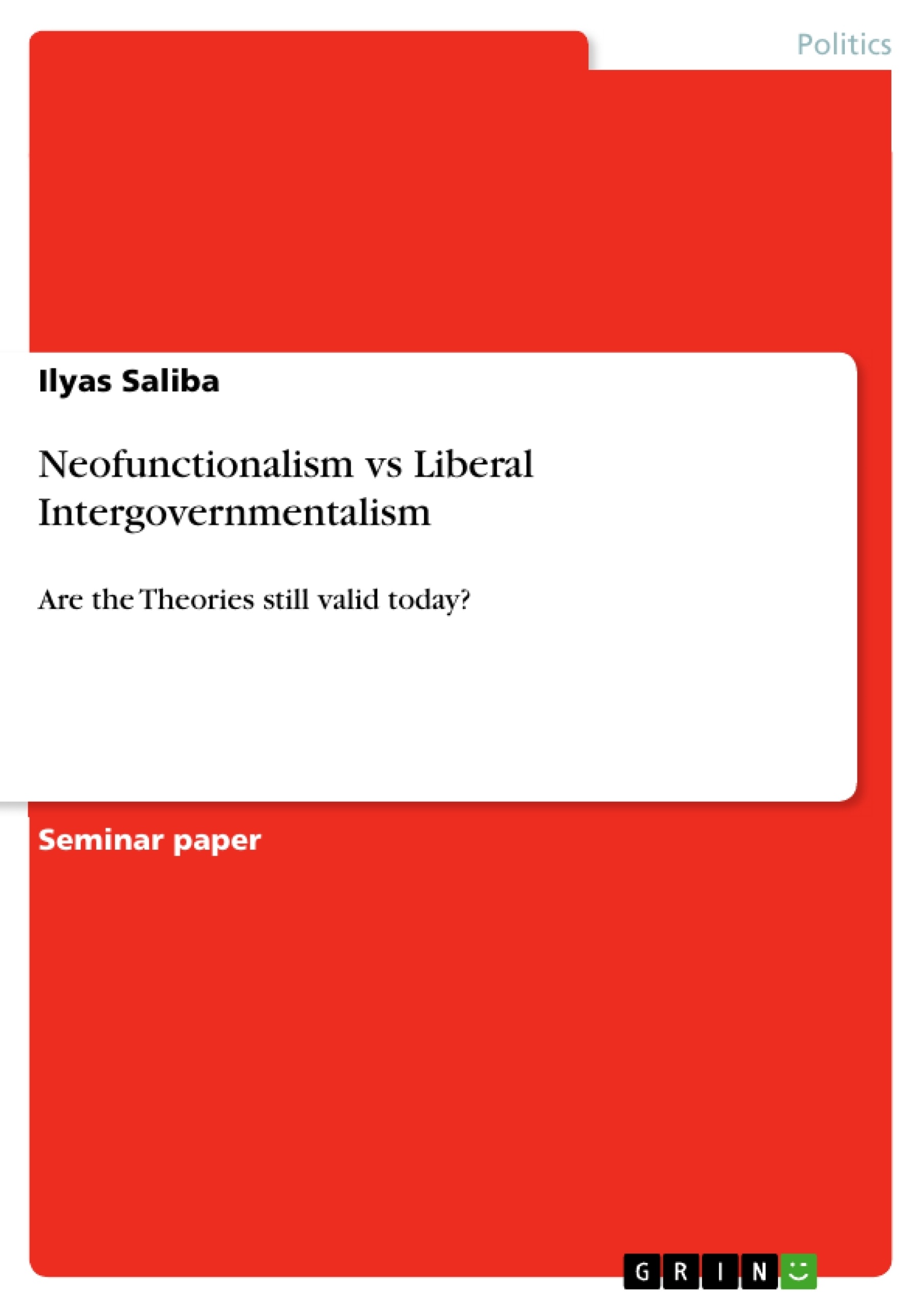Neofunctionalism and Liberal Intergovernmentalism (from now on I will use the abbreviations: NF and LIG in this paper) have been predominant approaches to theorizing Integration processes, especially in the first phase of theorizing European Integration. In the following essay I will begin by briefly lay out the main assumptions of the two approaches, drawing especially on their differences and similarities. In a second part I will discuss what these theories set out to do and raise questions about the actual accomplishments. Thirdly, I will turn to a critique of LIG and NF identifying their weaknesses, refering to Thomas Risse`s argument that Liberal Intergovernmentalism and Neofunctionalism are both lacking `...some categories necessary to capture distinctive features of the EU`2. This will lead me to the fourth part of my analysis in which I will demonstrate what and how other approaches can fill in the theoretical gaps and wholes that I have pointed out in my critique. In My conclusion I argue that European Integration Theory does not need overarching, universal theories, but rather is a useful conglomerate of different theories3, that might be combined in eclectically, and offer various toolkits for different suitable areas and levels of analysing and explaining Integration.
Table of Contents
- 1. Introduction
- 2. Main Part
- 2.1 LIG & NF - comparison & basic assumptions
- 2.2 LIG & NF - intentions, aim and validity
- 2.3 LIG & NF - a Critique
- 2.4 Alternative approaches to European Integration
- 3. Conclusion & Outlook
Objectives and Key Themes
This essay critically examines the 'grand theories' of Neofunctionalism (NF) and Liberal Intergovernmentalism (LIG) in the context of European integration. The essay seeks to assess their strengths, weaknesses, and continuing relevance in the field of European integration studies.
- Comparison and basic assumptions of NF and LIG
- Intentions, aims, and validity of the theories
- Critique of LIG and NF
- Alternative approaches to European Integration
- The role of rational actors and their self-interest in the integration process
Chapter Summaries
- Introduction: Introduces the essay's topic – examining the grand theories of European integration, NF and LIG, and outlines the structure of the essay.
- Main Part:
- 2.1 LIG & NF - comparison & basic assumptions: This section compares and contrasts the basic assumptions of LIG and NF, highlighting their similarities and differences. Both theories consider rational actors as drivers of integration, but LIG focuses on nation-state governments, while NF emphasizes various political and social elites.
- 2.2 LIG & NF - intentions, aim and validity: This section examines the intentions and goals of the two approaches and assesses their success in providing a universal theory of integration. The section argues that both theories have had significant influence, particularly in the early stages of European integration studies, and have continued to be revised and reintroduced in different contexts.
- 2.3 LIG & NF - a Critique: This section critically analyzes the weaknesses of both LIG and NF, drawing on Thomas Risse's argument that both theories lack categories to capture distinctive features of the EU. The section lays the groundwork for exploring alternative approaches that can address these shortcomings.
- 2.4 Alternative approaches to European Integration: This section explores alternative approaches to European integration that can fill in the theoretical gaps and weaknesses identified in the critique of LIG and NF. This section demonstrates how these alternative approaches offer a more nuanced understanding of the EU.
Keywords
The central themes and concepts explored in this essay are: European Integration, Neofunctionalism, Liberal Intergovernmentalism, rational actors, self-interest, interstate bargaining, spill-over, supranational institutions, integration processes, and alternative approaches to European integration. The essay examines these themes in the context of the evolving European integration project.
- Citar trabajo
- Ilyas Saliba (Autor), 2010, Neofunctionalism vs Liberal Intergovernmentalism, Múnich, GRIN Verlag, https://www.grin.com/document/155629



